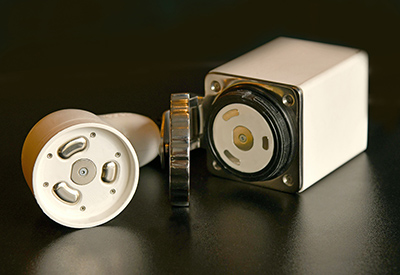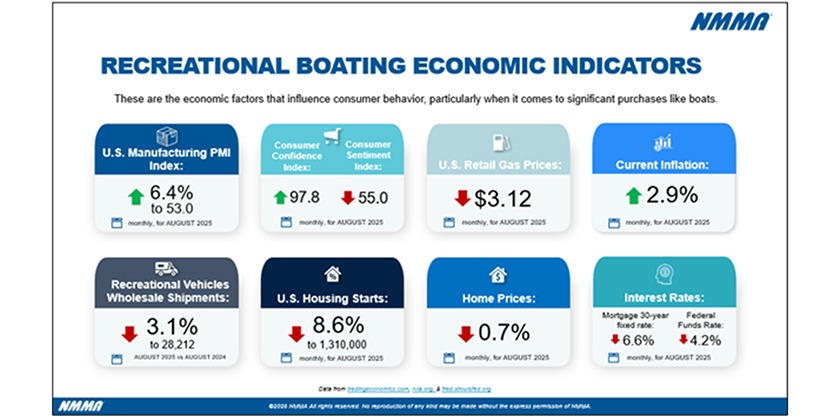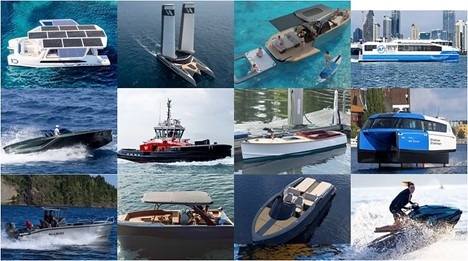A new standard in Shore Power Safety

Apr 25, 2022
Eliminating the traditional socket eliminates any opportunity for water to collect inside the VoltSafe plug and lead to corrosion.
A Canadian company aims to dominate the global shore power market with a unique prongless plug that it says represents the safest electrical connection in the world.
A Canadian tech company is looking to capture the shore power market with a unique magnetic plug design that eliminates the traditional prong-and-socket configuration to create what it says is the safest and most versatile shore power system in the world.
A small Vancouver-based start-up named VoltSafe has designed a unique prongless shore power connection that uses magnets to mate corresponding flat surfaces on the male and female terminals – a design the company says represents a significant step forward from the traditional pronged plug that was first introduced more than 140 years ago.
“The only way to take plug design out of the dark ages is by eliminating the constraint of prongs altogether,” says VoltSafe CEO, Trevor Burgess. “The original inspiration came from the Magsafe connection used on Apple laptop computers, which is a low-voltage magnetic connector. Our design uses allows a high-power connection suitable for shore power connections. The tricky part was figuring out how to design the technology in a way that only allows electricity to flow once both sides are fully connected.”
In 2018, co-founders Trevor Burgess and Arash Janfada successfully pitched VoltSafe on the CBC television program Dragons’ Den, receiving three investment offers above their initial asking price. The company’s first product to market was VoltSafe Winter – a magnetic plug for automotive block heaters, in a nod to the technology’s original inspiration – Janfada accidentally ripping the block heater cord out of his vehicle after forgetting to disconnect the device before driving away. With commercialization of their first product behind them, Burgess – an active boater – now has the company’s sights focused squarely on 30-amp and 50-amp marine shore power connectors.
 Voltsafe team, from left: CMP Terri Breker, sales associate Gaurav Parmar, CEO Trevor Burgess and CTO Sanad Aridah.
Voltsafe team, from left: CMP Terri Breker, sales associate Gaurav Parmar, CEO Trevor Burgess and CTO Sanad Aridah.
The company has developed a working prototype of its magnetic shore power plug and matching pedestal, utilizing flat connector surfaces that Burgess says eliminate any possibility of internal water pooling that could lead to corrosion.
VoltSafe’s internal integrated circuitry maintains the plug in a power-off mode until a fully-secure connection with the pedestal is established. Burgess says the unique circuitry provides an important safety margin beyond that of existing systems. “All plugs powered by VoltSafe technology have a level of safety built in that approaches that of the aerospace sector,” he says. “The plugs will only turn on once the outlet recognizes an exact electrical signature from its counterpart, and this all happens in less than five milliseconds once the two sides are fully connected. So, if you accidentally drop your plug in the water, it’s not going to pop all the breakers or electrocute anyone. People are talking about electric shock drowning a lot these days, and this eliminates any potential for it.
“Our functional marine cord prototype does 30 amps, which we are advancing to 50 amps,” he adds. “We can do a 100-amp cord for big yachts quite easily, but right now the focus is just on the broader recreational boat market. That’s the one thing VoltSafe tech has in common with traditional pronged plugs, in that it isn’t limited by voltage or amperage requirements.”
Burgess further notes that the plug was designed from the outset to handle high voltage, allowing the magnetic shore power connection to rapidly charge electric boats – a feature he says will provide boaters with greater convenience while saving marinas the cost of installing separate charging stations.
VoltSafe is presently engaged in discussions with potential partners – including both marina pedestal and recreational marine EV manufacturers – with a view to bringing the system to market more rapidly through licensing agreements. Adapter cords can provide early adopters with backward compatibility with existing pedestals when traveling.
“The marine industry is so ripe for innovation,” says Burgess. “The standard electrical plug was born at the beginning of second industrial revolution and still has us stuck there. Our approach provides a level of safety that cannot be duplicated by a traditional pronged plug and receptacle, and it provides opportunities for additional functionality since VoltSafe by nature is a smart plug and can include add-on features like boat slip power metering, Wi-Fi, mesh networks and IoT security, for example. At the same time, there is no opportunity for arcing or the fires that result. We believe this is the future.”
By Craig Ritchie




























